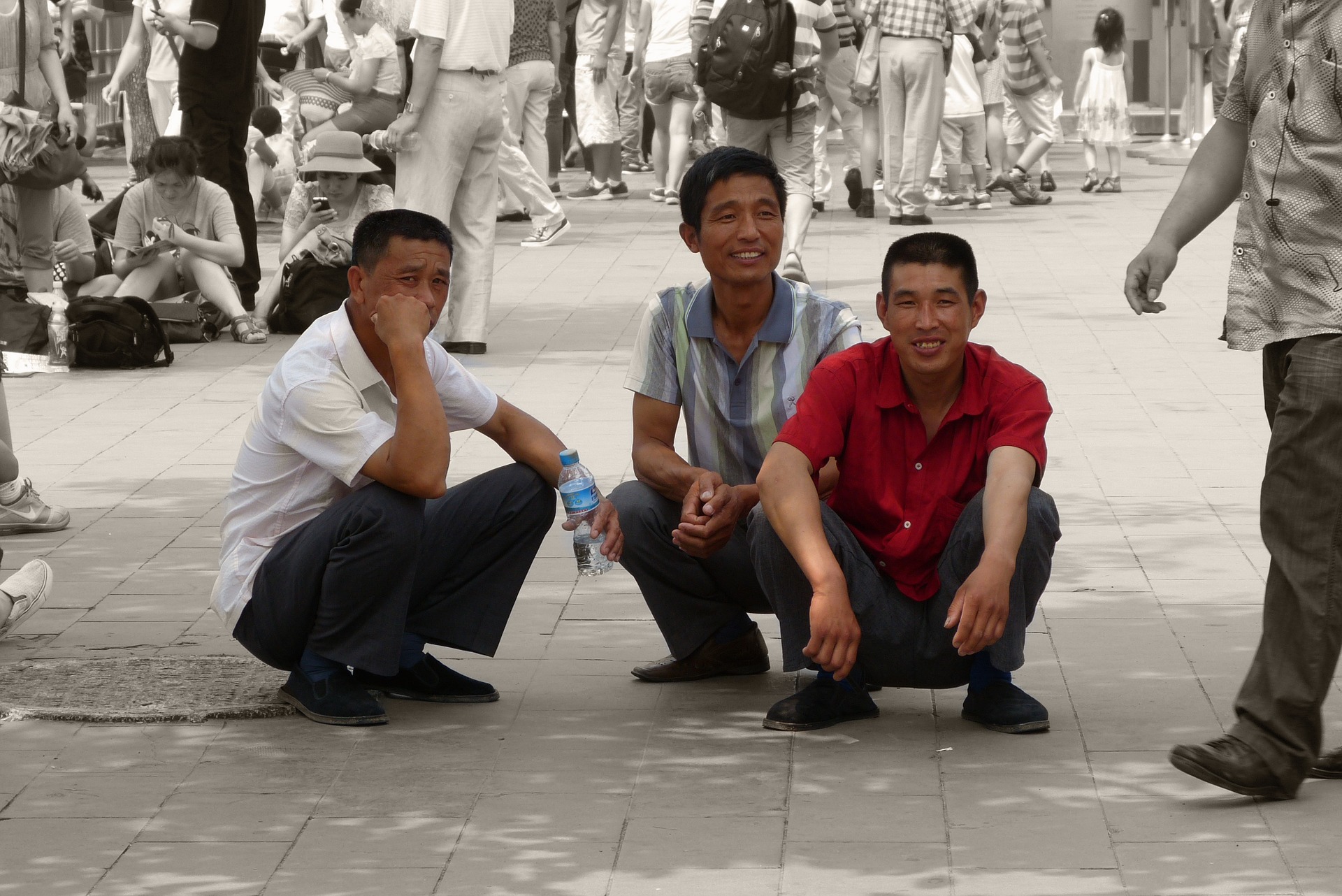‘Old Demons, New Deities’ will resonate in Taiwan, a country that, like Tibet, is torn between the competing realities of independence or subjugation by China.
Never judge a book by its cover, they say. But you might want to do just that with Old Demons, New Deities: 21 short stories from Tibet, which will be published by OR Books on Dec. 5. Its arresting jacket image of a fierce blue-faced Tibetan god squatting in polka dot underpants in front of what looks like a kaleidoscope of mainly Western logos and icons, commands the observer to “sit down and read me!” One of the first collections of short fiction by Tibetan writers in English, the book is an eye-opening journey into the imagined lives of Tibetans scattered over the globe — some in Tibet, others in South Asian exile, and a few adrift in the U.S.
Old Demons, New Deities is also a book that will resonate in Taiwan, a country that like Tibet, is torn between competing narratives of independence or subjugation by China. The two also share several big issues — China represents an existential threat to both, they both endeavor to be heard on the world stage and both struggle to define their identity. Tibet because it was conquered by the Chinese Communist Party, and Taiwan because it was taken over by the Kuomintang (KMT).
Writer and translator Tenzin Dickie is this new anthology’s editor (she also translated many of the stories and wrote one). She says she believes fiction is one way to unite and face up to these problems.
“The Chinese government has a narrative about Tibet and about Taiwan. And it’s a narrative that the Party controls with violent means, a narrative that it imposes not only on the Tibetan people and the Taiwanese people, but their own people too. It’s a narrative with an agenda … Writers … provide a counter-narrative to the state-sanctioned story. They say, We are here, this is how we live and we are going to tell our stories now.
“Here’s the thing about literature, about stories; they tell us about ourselves and in doing so, they help shore up ourselves, our courage, our love, our humanity.

Tenzin Dickie, author, translator and editor of ‘Old Demons, New Deities’ (Photo: Tenzin Tsetan Choklay)
People are hungry for stories in our part of the world, especially people like us whose right to exist as a people, as a state, is threatened by another state. Our voice is powerful and we have to keep speaking … to free up more space, more literary space, more cultural space, more political space. In such circumstances, I see any kind of art-making and cultural production as acts of resistance.”
Among the 16 authors who contributed to this collection are several well known for being a voice of resistance against China. There is the elegant and outspoken poet Woeser, who is famous as the go-to Tibetan inside China for media interviews in the Western press. Jamyang Norbu, who pens two stories in this book, is a smart and strident Tibetan activist, based in the U.S. and curiously also the author of The Mandala of Sherlock Holmes. Working within the Chinese system, but an intelligent voice for Tibetan reality on the big screen is Pema Tseden, a renowned independent film director and screenwriter from Qinghai Province, whose movies have won many awards including last year at Taiwan’s Golden Horse Festival.
This collection does a decent job of exposing the reader to the lives of ordinary Tibetans at different time periods and different places. Several read like folk tales, keeping the reader at a safe distance, while others pull you in right into the bone of the main protagonist. Others buzz pleasurably underneath with a political undercurrent — one example is Tsering Dondrup’s “The Valley of the Black Foxes,” an account of a nomadic family forcibly resettled into a wretched concrete village by the local Chinese government. Tibetans are not idealized in these pages either; many are simple and superstitious, others heartless and mean, still others are grotesque — poor Ralo in the eponymous story also by Tsering Dondrup, always had “thick yellow snot hanging from his nose.”
 A number, including “Ralo,” feel unresolved. Are they so Tibetan that a non-Tibetan might miss cultural cues? Dickie doesn’t think so. “While a Tibetan background might mean that you’ll have an enriched understanding of these stories, someone who has never heard of Tibet can read these stories and come to know Tibetans, what sort of people we are, what our hopes and dreams are, what our stresses and struggles are. You are right that there are a couple of stories that seem curiously unresolved but I think they are intentionally unresolved. You know, Tibetan lives are curiously unresolved.”
A number, including “Ralo,” feel unresolved. Are they so Tibetan that a non-Tibetan might miss cultural cues? Dickie doesn’t think so. “While a Tibetan background might mean that you’ll have an enriched understanding of these stories, someone who has never heard of Tibet can read these stories and come to know Tibetans, what sort of people we are, what our hopes and dreams are, what our stresses and struggles are. You are right that there are a couple of stories that seem curiously unresolved but I think they are intentionally unresolved. You know, Tibetan lives are curiously unresolved.”
While being Tibetan would probably help with the more esoteric parts of some of these stories, they do offer everyone a deeper level of understanding than can be found in newspaper features on Tibet and books about the Dalai Lama. The stories chase many different themes: Bollywood, Indian bureaucracy, Maoist madness, the supernatural, and sexual desire at a Buddhist retreat to name just a handful. And perhaps, more importantly, than that, this rare collection of Tibetan contemporary work is a great introduction to some of the most talented writers today, offering suggestions for Tibetan authors worth exploring further.
Spanning the arc of these 21 tales are common themes of the pain of exile outside Tibet or a helplessness and despair of life under Chinese rule inside Tibet. Many of the stories are bleak, depressing and filled with an agonizing longing. One that stands out for being more playful is “Letter for Love” by Tsering Wangmo Dhompa, a smartly written tale full of comic insight about a young woman who, on her mother’s orders, helps Pema, a widow with her correspondence to an eligible bachelor in the U.S.
To balance the ordinariness of the letter, she slipped in a sentence on the lingering reach of jasmine in the last hours of the day. Then, unable to help herself, she wrote about the dawn; how the opaque mist smeared itself so thickly it allowed people to believe it would burst like a balloon if poked with a finger.
She knew what her mother’s response would be if she read the unauthorized sentences, “Why would Pema stick her nose into jasmine plants when she knows the men are pissing into them every day?”
Dickie explains that the nature of Tibetan lives is melancholy and so you can’t expect the people’s literature not to reflect that. “We live in exile or in occupied Tibet, and our lives are delimited, circumscribed in many many ways because of our political situation. There’s just so much national trauma and of course that’s going to come out in the literature too.”
The book’s title, Old Demons, New Deities, stays faithful to the reputation of Tibet as a place of religion and superstition and, Dickie says, it’s up to the reader to decide who are the demons and who are the deities. “There’s a Tibetan saying that I came across: An old demon is better than a new deity … It’s the Tibetan version of ‘better the devil you know,’ except that for Tibetans demons and deities weren’t always just metaphorical … I didn’t have prescriptive referents for the old demons and new deities of the title. I liked the idea that they might mean different things to different people, a sort of democracy of titles. Tibetans are caught between history and the future, in between the old and the new, in between the demons and the deities.”
Book Details
Old Demons, New Deities, 21 short stories from Tibet
Tenzin Dickie, editor
OR Books (2017)
304 pages
You might also like
More from Book Reviews
Lawyer, Advocate, Activist: Chiu Hsien-chih’s Vision for Justice in Taiwan
In his book ‘Stand By You,’ human rights lawyer Chiu Hsien-chih examines major human rights cases, problems with Taiwan’s legal …
Stories From China’s Secret Prisons
In recent years hundreds of Chinese lawyers and activists have been arbitrarily jailed under a new form of detention. All …









